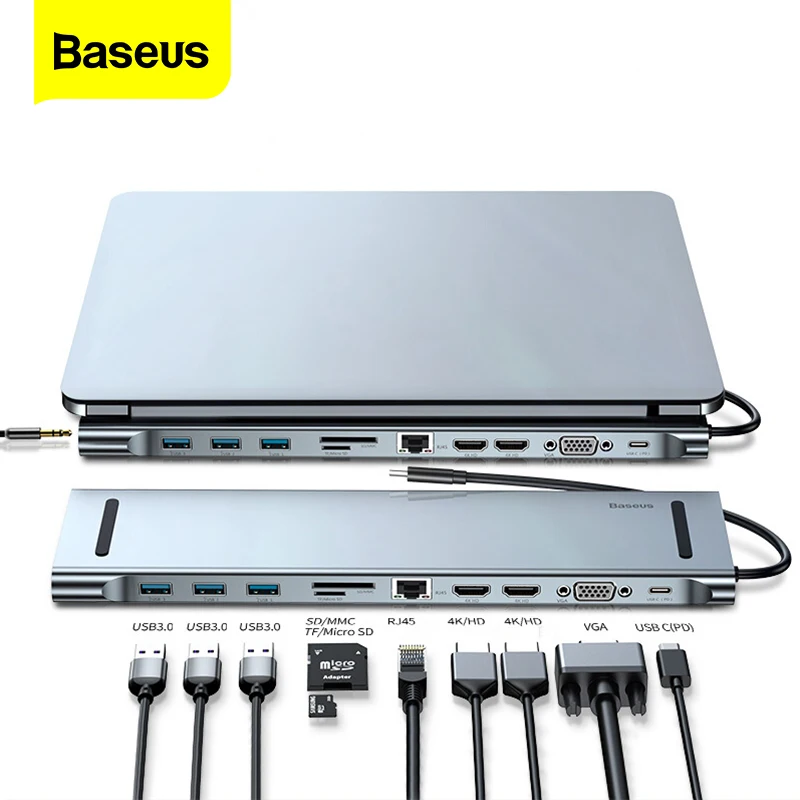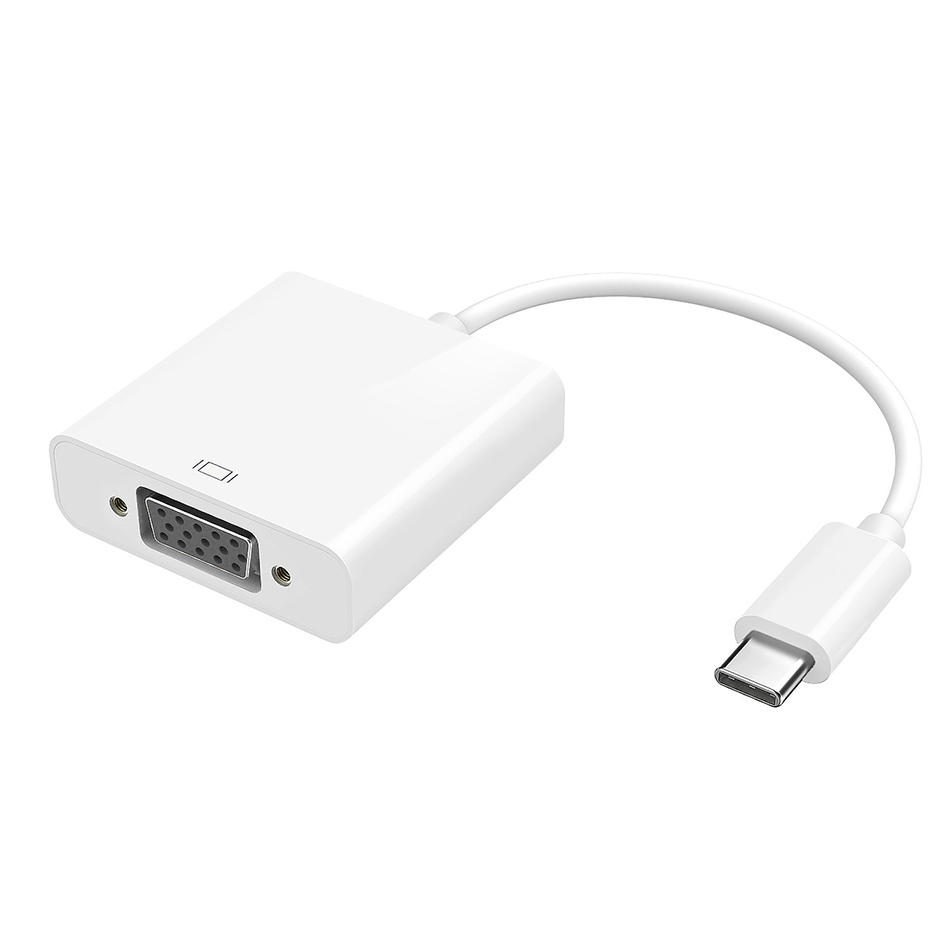

One more thing to look out for is a reversible design. The thickness of the cord used in an adapter is generally a pretty good guide for its overall durability. Loose connections can be as bad as cables which are outright broken. The quality of a USB-C to VGA adapter matters, to the extent that any variety of things can cause harm to the quality of your signal. VGA simply can’t carry that much data to begin with.
#Usb c to vga for mac 1080p
You can’t totally ignore them and choose an adapter blindly, but it’s worth keeping in perspective that your 1080p content isn’t going to be easily demolished in the way other high-bandwidth adapters might. If you’re using a common 1080p panel, then you’re not going to have to worry too much about these kind of issues. And what happens when you fax the same image, over and over?Įssentially the same thing is occurring within adapters. Little distortions may work their way into the transmission.

Imagine you took a black and white photo, and then ran it through a fax machine. It’s an inevitable aspect of copying the signal from one format to another. Most noteworthy perhaps are how its compresses RGB information, and its inability to separate audio and video signals.Īnytime you’re moving data across an adapter, there’s a risk of your video quality becoming damaged, scarred, or otherwise diminished. Needless to say, the format has its limitations. Though it continues to see use, it was superseded by the DVI format in 1999, which was later replaced by HDMI. VGA ports are relatively simply 15-pin connectors, used on a variety of monitors, video cards, and HDTVs.
#Usb c to vga for mac pro
That provides 40Gbps bandwidth and reductions in power consumption, which is ideal for MacBook Pro and similar devices. One noteworthy exception is USB-C with support for Thunderbolt 3. In other words, you don’t need to worry too much about USB-C features because your video signal is ultimately going to be moving through VGA. And because of how its constructed, USB-C has in problem communicating to several different video signals simultaneously, including HDMI, DisplayPort, and VGA.īut when you’re adapting VGA to USB-C, or vice versa, those properties are going to be washed down to the level of the lowest common standard between the two technologies. Moreover, the most recent version of USB, USB 3.1, provides connections with 10 Gbps of bandwidth. It’ll send data at high speeds, communicate audio information, video information, and everything else necessary for a truly universal standard. Humidity, corrosion, heavy use, these sorts of things can make your adapter worthless before you realize.


A poorly built adapter ends up wearing-down far quicker than it should. The second category is something people may not be familiar with. That means people adapting their older stuff from older standards, like VGA, can do almost all of that adaptation through USB! Choosing a USB-C to VGA Adapter Cableīut choosing the wrong adapter can have consequences in performance, either immediately or in the long term. It can move video, audio, raw data, Internet signals, power, and more. USB-C is becoming a new dominant standard. We all wish these things were as simple as “does it work”, but in practice, things are usually a bit more complicated. Adapters, extenders, and similar cable equipment can wreak havoc on your signal. What’s the difference between one USB cable and another? More often than not, quite a bit.


 0 kommentar(er)
0 kommentar(er)
